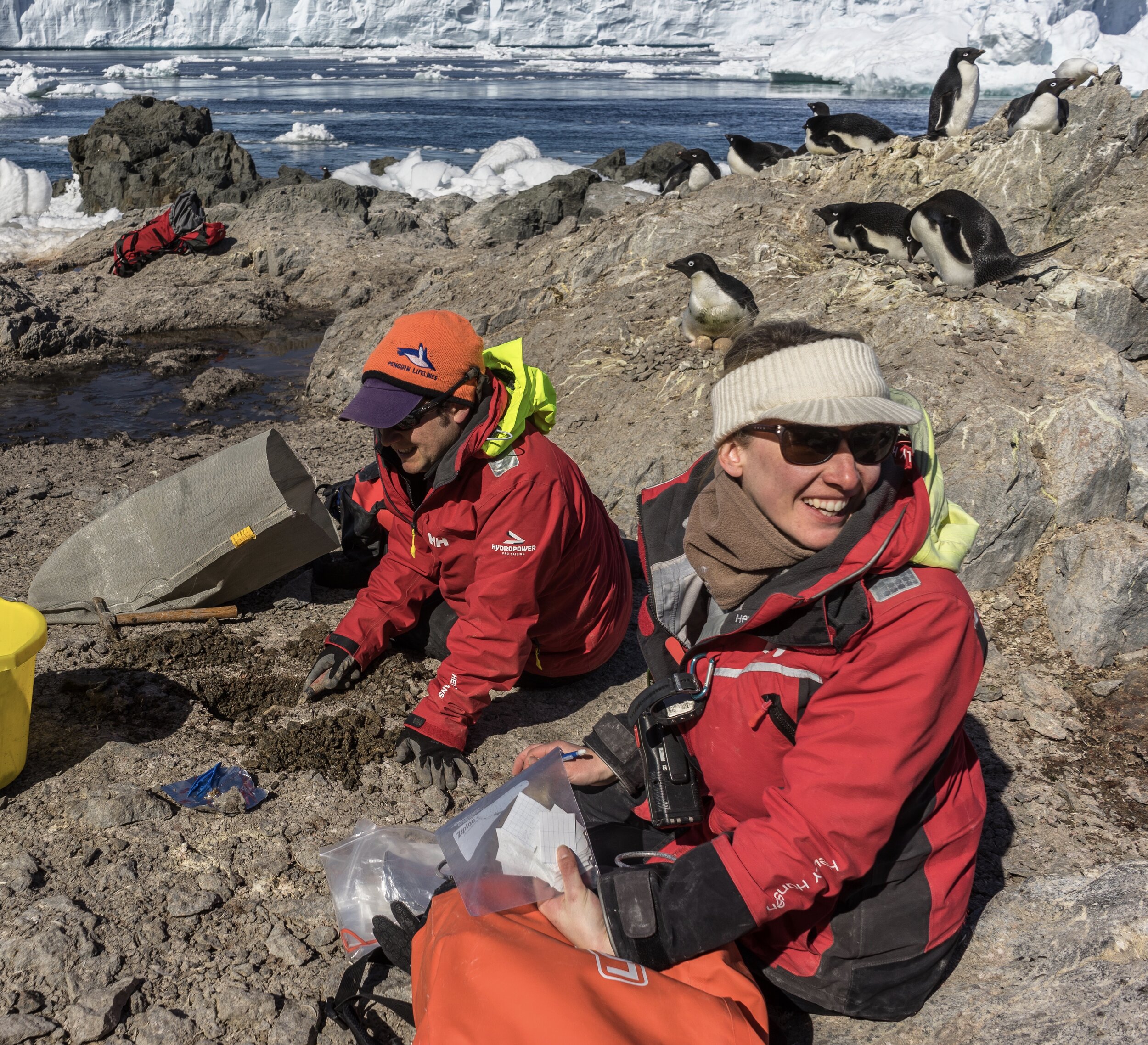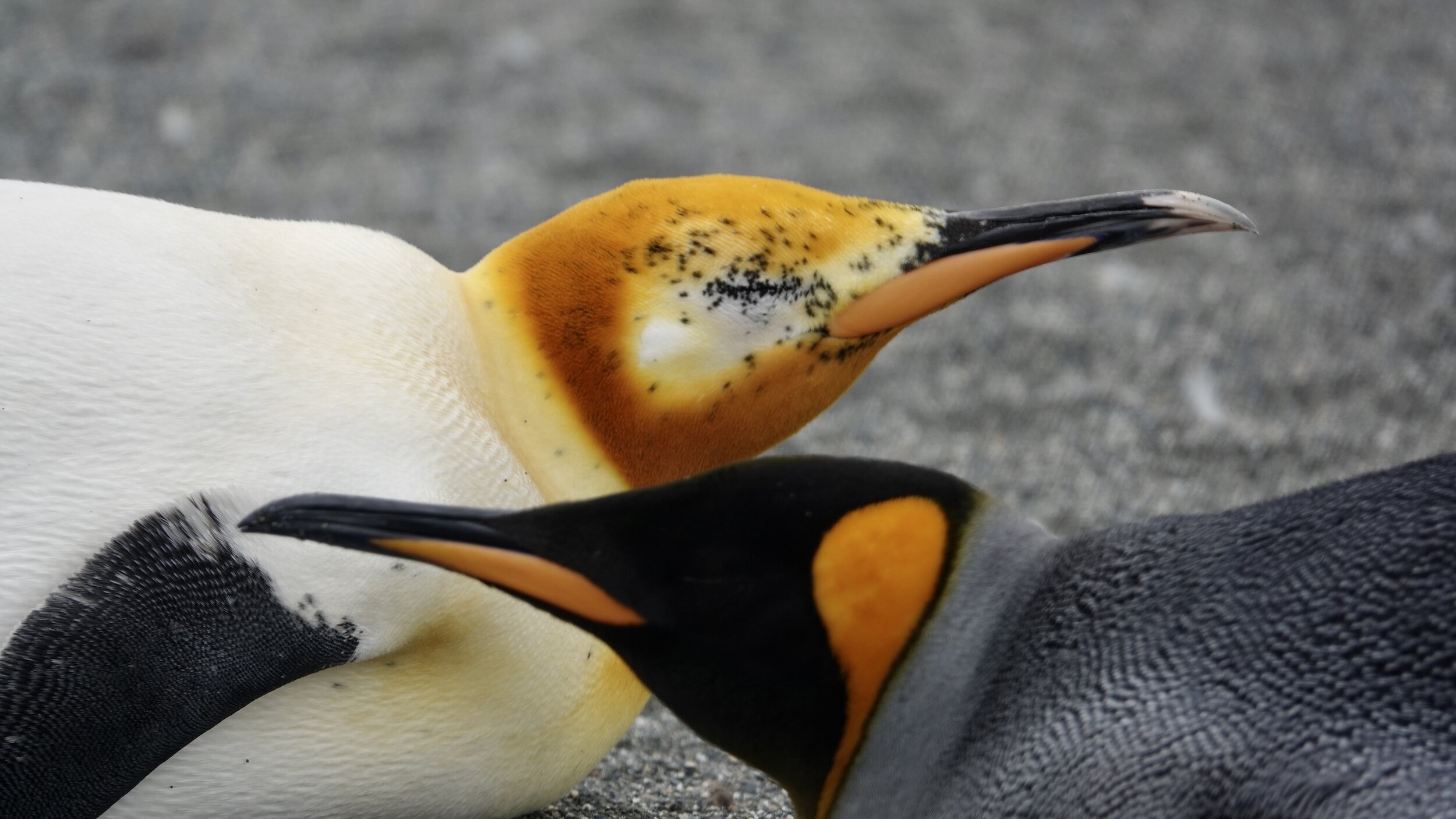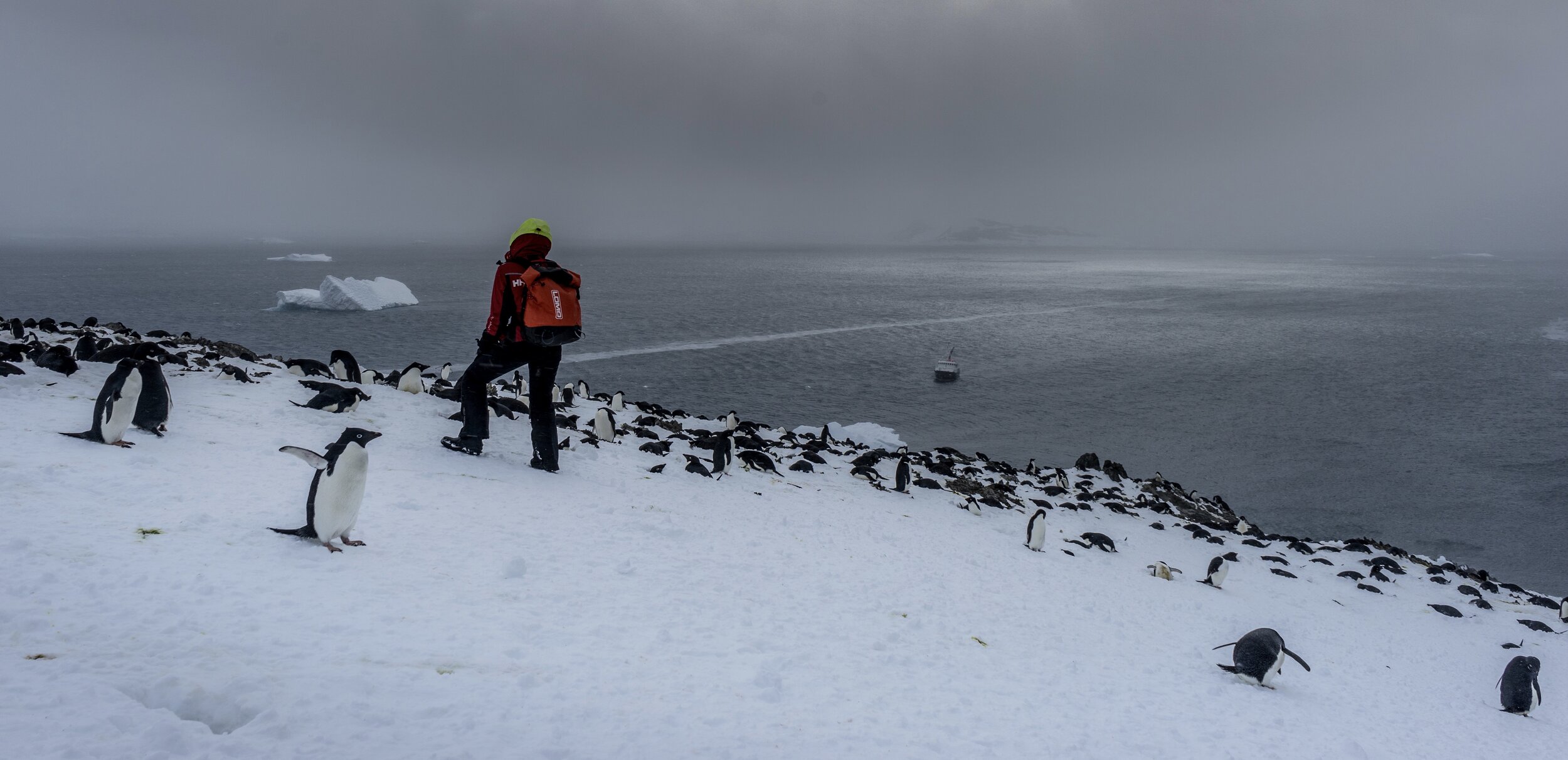
© Gemma Clucas
Penguin population genomics
My Master’s and PhD research at the University of Southampton and University of Oxford described patterns of connectivity among colonies of Emperor, King, Chinstrap, Adélie, and Gentoo penguins. Working closely with collaborators, in particular my advisor, Tom Hart, and fellow student at the time, Jane Younger, I was among the first to describe the population structure of most of these species, and the first to use genomic techniques to do this. I was also the first in the Ocean Research and Conservation group at Oxford to switch from genetics to genomics, so I was self-teaching as I went.
I am continuing this work through a growing network of collaborators. Jane and I are continuing to work together and have just published a study showing that Gentoo penguins may in fact be four cryptic species. We are soon co-leading an expedition to Antartica to further investigate this.
Tom Hart and I recently had a fantastic expedition to the South Sandwich Islands where we are monitoring penguin colonies through the use of drones, satellite tracking, time-lapse imagery, and DNA metabarcoding. More on that project here.
And some of my other recent, collaborative projects include:
An investigation led by Tess Cole at the University of Otago into the impacts of the last glacial maximum on Antarctic and sub-Antarctic penguins.
An assessment of the vulnerability of Emperor penguins to sea ice loss, led by Phil Trathan at the British Antarctic Survey.
Work to investigate the population structure and species boundaries of Rockhopper penguins, with María José Frugone and Julianna Vianna at the Pontifical Catholic University of Chile.
A long-term look at the diets of penguins using ancient penguin remains and stable isotope analysis, with Mike Polito at Louisiana State University.

Bundled up in the Danger Islands, December 2015. Photo by Alex Borowicz.

Chinstrap penguins at Point Wild, Elephant Island. November 2014.

Adélie penguin nap time. Petermann Island, Antarctic Peninsula, November 2014.

Chinstrap penguins waiting to be counted in the Danger Islands. Photo by Mike Polito.

Macaroni penguins in beautiful South Georgia. January 2020.

Digging up and labelling ancient penguin bones and eggshells on the Danger Islands with Mike Polito, December 2015. Photo by Alex Borowicz.

A very cool leucistic King penguin at St Andrews Bay, South Georgia. January 2020.

Oh hiiiiii! Fur seal pup, Moltke Harbour, South Georgia, January 2020.

Looking back to the Hans Hansen, December 2015. Photo by Alex Borowicz.

A regal looking King penguin at St Andrews Bay, South Georgia. December 2014.

Chinstrap penguin nap time. Elephant Island, November 2016.